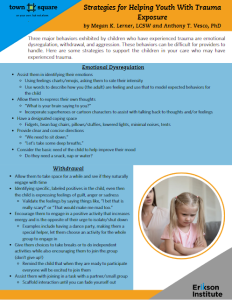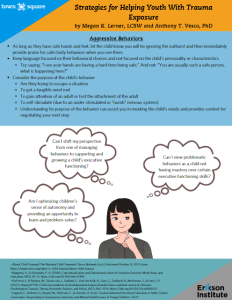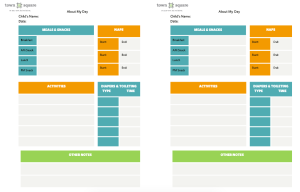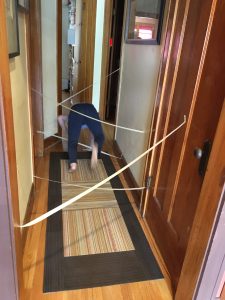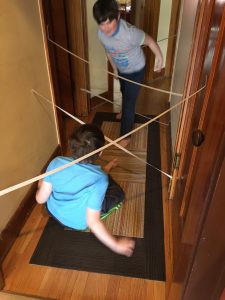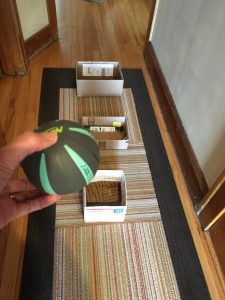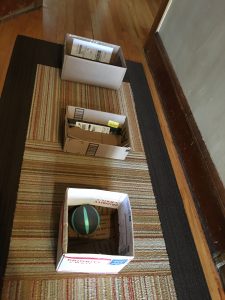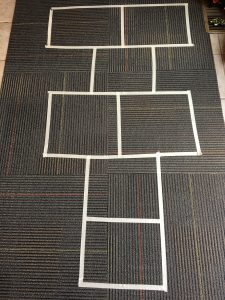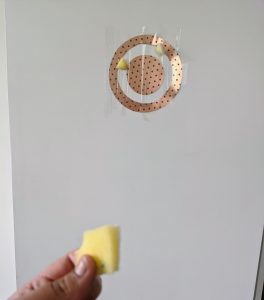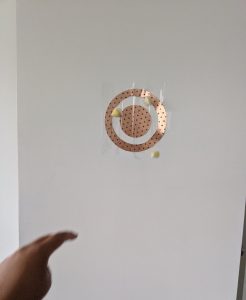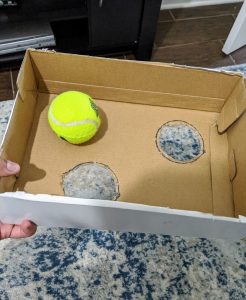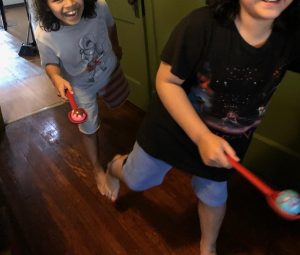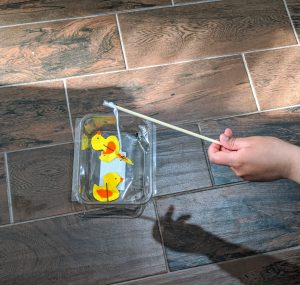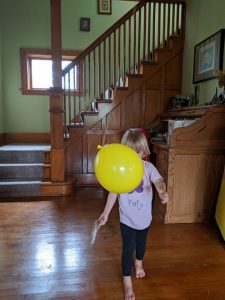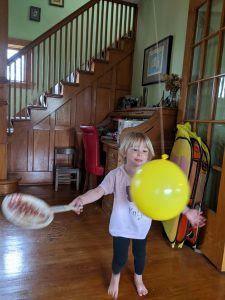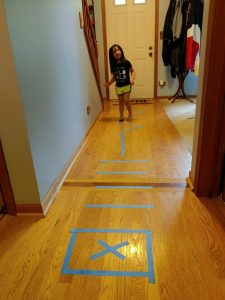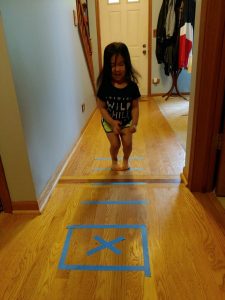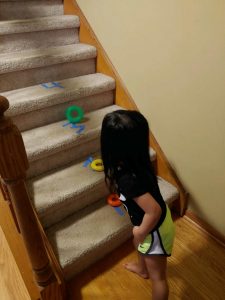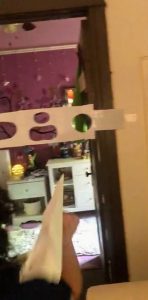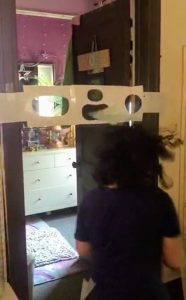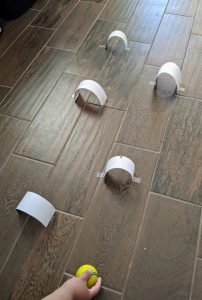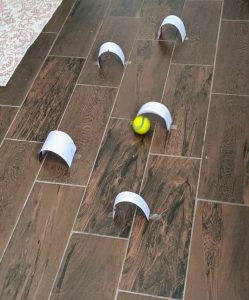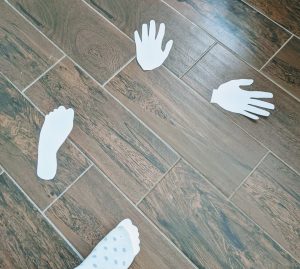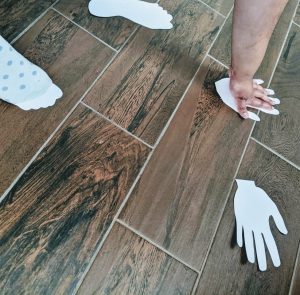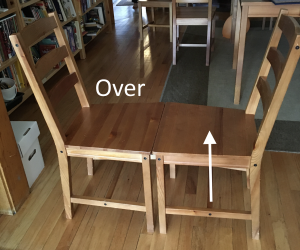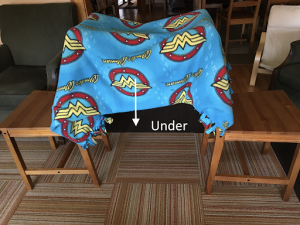This printable/downloadable resource will help providers understand difficult behaviors that may be a result of trauma, and support children in developing skills to overcome their difficulties.
TS Strategies for Helping Youth With Trauma Exposure
Accessible version below:
Strategies for Helping Youth with Trauma Exposure
Strategies Emotional Dysregulation
Assist them in identifying their emotions
Using feelings charts/emojis, asking them to rate their intensity
Use words to describe how you (the adult) are feeling and use that to model expected behaviors for the child
Allow them to express their own thoughts
“What is your brain saying to you?”
Incorporate superheroes or cartoon characters to assist with talking back to thoughts and/or feelings
Have a designated coping space
Fidgets, bean bag chairs, pillows/stuffies, lowered lights, minimal noises, tents
Provide clear and concise directions
“We need to sit down.”
“Let’s take some deep breaths.”
Consider the basic need of the child to help improve their mood
Do they need a snack, nap or water
Strategies for Withdrawal
Allow them to take space for a while and see if they naturally engage with time
Identifying specific, labeled positives in the child, even then the child is expressing feelings of guilt, anger or sadness
Validate the feelings by saying things like, “I bet that is really scary!” or “That would make me mad too.”
Encourage them to engage in a positive activity that increases energy and is the opposite of their urge to isolate/shut down
Examples include having a dance party, making them a special helper, let them choose an activity for the whole group to engage in
Give them choices to take breaks or to do independent activities while also encouraging them to join the group (don’t give up!)
Remind the child that when they are ready to participate everyone will be excited to join them
Assist them with joining in a task with a partner/small group
Scaffold interaction until you can fade yourself out
Strategies for Aggressive Behaviors
As long as they have safe hands and feet, let the child know you will be ignoring the outburst and then immediately provide praise for calm body behaviors when you see them
Keep language focused on their behavioral choices and not focused on the child’s personality or characteristics
Try saying, “I see your hands are having a hard time being safe.” And not: “You are usually such a safe person, what is happening here?”
Consider the purpose of the child’s behavior
Are they trying to escape a situation
To get a tangible need met
To gain attention of an adult or test the attachment of the adult
To self-stimulate (due to an under-stimulated or “numb” nervous system)
Understanding the purpose of the behavior can assist you in meeting the child’s needs and provides context for negotiating your next step
Ask Yourself These Questions Before You Intervene
Can I shift my perspective from one of managing behaviors to supporting and growing a child’s executive functioning?
Can I view problematic behaviors as a child not having mastery over certain executive functioning skills?
Am I optimizing children’s sense of autonomy and providing an opportunity to learn and problem-solve?
Give families a snap shot of their child’s day in care! Prints two sheets per page.
Some fun ideas for indoor large motor play for programs with limited access to an outdoor space, bad weather, or to share with families
- Laser maze – Works best in a hallway, but a door frame can work for a shorter obstacle. Using painter’s tape, streamers or yarn, web it between the walls or door frame. Have children walk through without touching the tape.
- Ball toss – Use softballs or bean bags and baskets or boxes. Arrange the boxes in a straight line. Have children take turns hitting the target. You can also use a staircase and have a box on each step, for older children use different size boxes to challenge them.
- Movement dice – Create a die with different movements shown on each side. Have children do the movement they roll or do a sequence of movements based on several rolls. For an added challenge, add a second die with numbers on each side for the number of times they must repeat that move. Simply print the pattern below, draw the movements, cut and fold the pattern into dice and start playing!
Town Square Paper dice
- Hopscotch – Using painters tape or washi tape create your version of a hopscotch board.
- Sticky wall – Place contact paper or thick tape on a wall, sticky side out. Have children throw pompoms or balls of paper to the target. For younger children, lower it down and allow them to place items on the sticky side.
- Ball race – using a box and a few balls, cut out holes on the bottom of a box, then have children then move the box allowing the ball to fall through. For older children, have them work with a larger box in teams, or create many holes and ask the children to try to keep the ball from falling through a hole.
- Bubble wrap road – Lay a path of bubble wrap on the floor and have children use balls or cars on the road. For younger children, have them walk or crawl on the bubble road.
- Balancing course – To work on balance, have children hold a spoon with a ball or pompom, then walk, jump, skip, to the other side of the room. Try a paper plate on their head, or holding toilet paper roll with a ball on top for extra challenge.
- Magnetic fishing– Create a simple magnetic fishing game with paper clips or bobby pins, paper or felt, straws and a magnet. Have children take turns fishing
Printable version Indoor large motor activities
Part 2 – Indoor large motor play activities for programs with limited access to an outdoor space, bad weather, or to share with families
Balloon ping pong – Using a paper plate or piece of cardboard and a stick, create a simple paddle. Then tie a string to a balloon and hang it down from the ceiling or doorway. Invite the children to hit the balloon with the paddle.
Tape maze – Use painters’ tape to make a fun maze on the floor. Ask children to then walk, hop, skip and jump to follow the tape. Different lines or shapes can indicate different ways to move. You can also use the maze for a car road by moving toy cars along the tape.
Hit the target toss – Using a bean bag, soft toy or plastic ring, add a mark on each step of a staircase. Add some extra fun and put numbers, colors or shapes on each stair. Ask each child to toss the object at the designated targets. You can also try this on a flat surface, just be sure to arrange the targets further apart from one another.
Paper airplane challenge – Take some paper and use some to cut out shapes of different sizes as targets, then tape the paper with the cut out targets across a doorway. Have children create their own airplane to try to fly through the targets. Encourage creating different kinds of paper planes and challenge the children to fly their airplane through different targets.
Ball Maze – Cut out strips of paper and then use tape to place them on the floor, arrange the arches to create a maze. Using a ball, ask children to roll under the arches to the end of the maze.
Simon Says – Play an active game of Simon Says, using paper cutouts of handprints or footprints, call out the name of the body part to have children move to reach the printout. Try adding different learning concepts, use shapes, colors, numbers depending on the children in your care.
Obstacle Course – Have each child design one part of an obstacle course and take a photo of it, shuffle the order of the photos to decide the order of the obstacle course, you can also draw the order or have children guide one another through the course.
Printable version Indoor large motor activities 2parte

